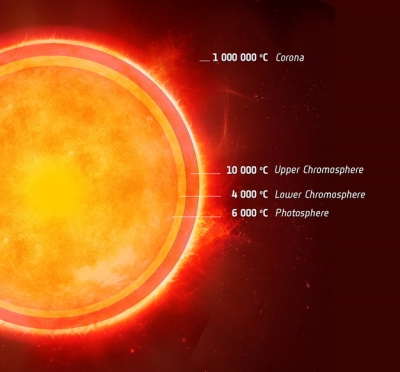
The visible surface of the sun, or the photosphere, is around 6,000 degrees Celsius (11,000 degrees Fahrenheit). But a few thousand kilometers above it – a small distance when we consider the size of the sun – the solar atmosphere, also called the corona, is hundreds of times hotter. The corona reaches a million degrees C or higher (over 1.8 million degrees F).
Although there was little doubt that part of the energy from the Sun’s interior reached its outer layers, the exact mechanism remained a mystery. The researchers concentrated on the small-scale magnetic field, which, except for the sunspots, has a ‘salt-and-pepper’ appearance.
Using powerful numerical models run on computers at the Centre de Physique Théorique and GENCI at IDRIS-CNRS, the team performed a simulation for several hours, based on a model made up of several layers, one inside the Sun and the others in its atmosphere. The researchers observed that the thin layer under the Sun’s surface actually behaves rather like a shallow pan containing boiling plasma[2], heated from below and forming ‘bubbles’ associated with granules. This boiling plasma soup generates a dynamo process that amplifies and maintains the magnetic field. As the field emerges from the surface, it takes on a salt-and-pepper appearance, forming concentrations dubbed ‘mesospots’ that are larger, fewer in number and more persistent, all of which is consistent with observations.
The researchers’ calculations show that, in the chromosphere, heating of the atmosphere results from multiple micro-eruptions in the mangrove roots that carry intense electric current, in pace with the ‘bubbles’ from the boiling plasma. They also discovered that larger but less numerous eruptive events take place in the neighborhood of the mesospots, although these are not able to heat the upper corona on a larger scale.
Picture Credit : Google




